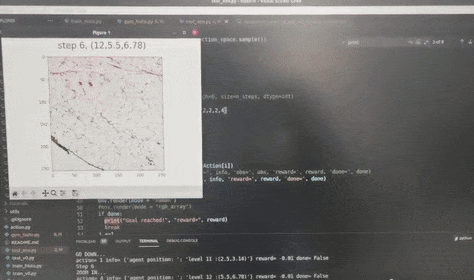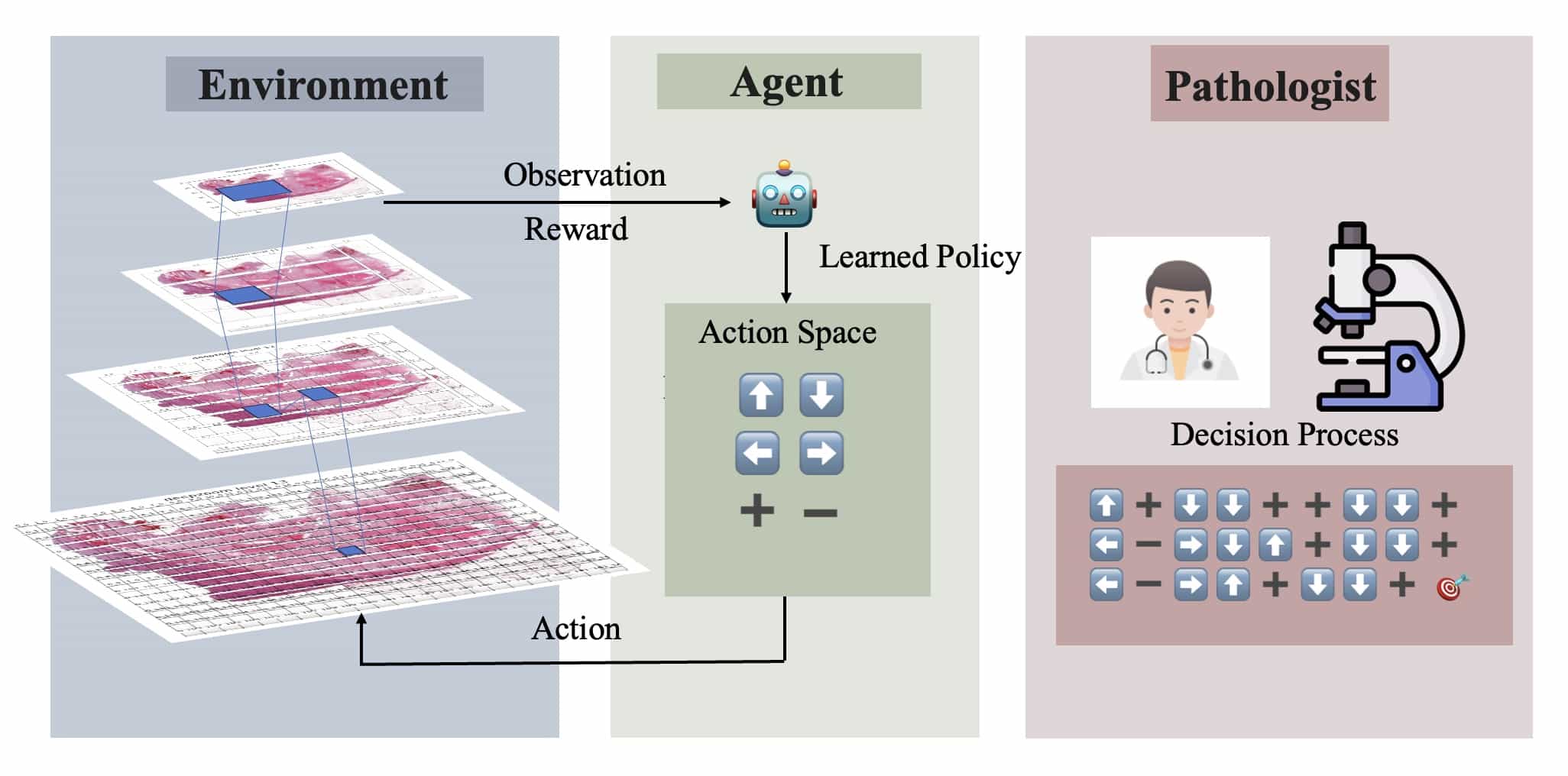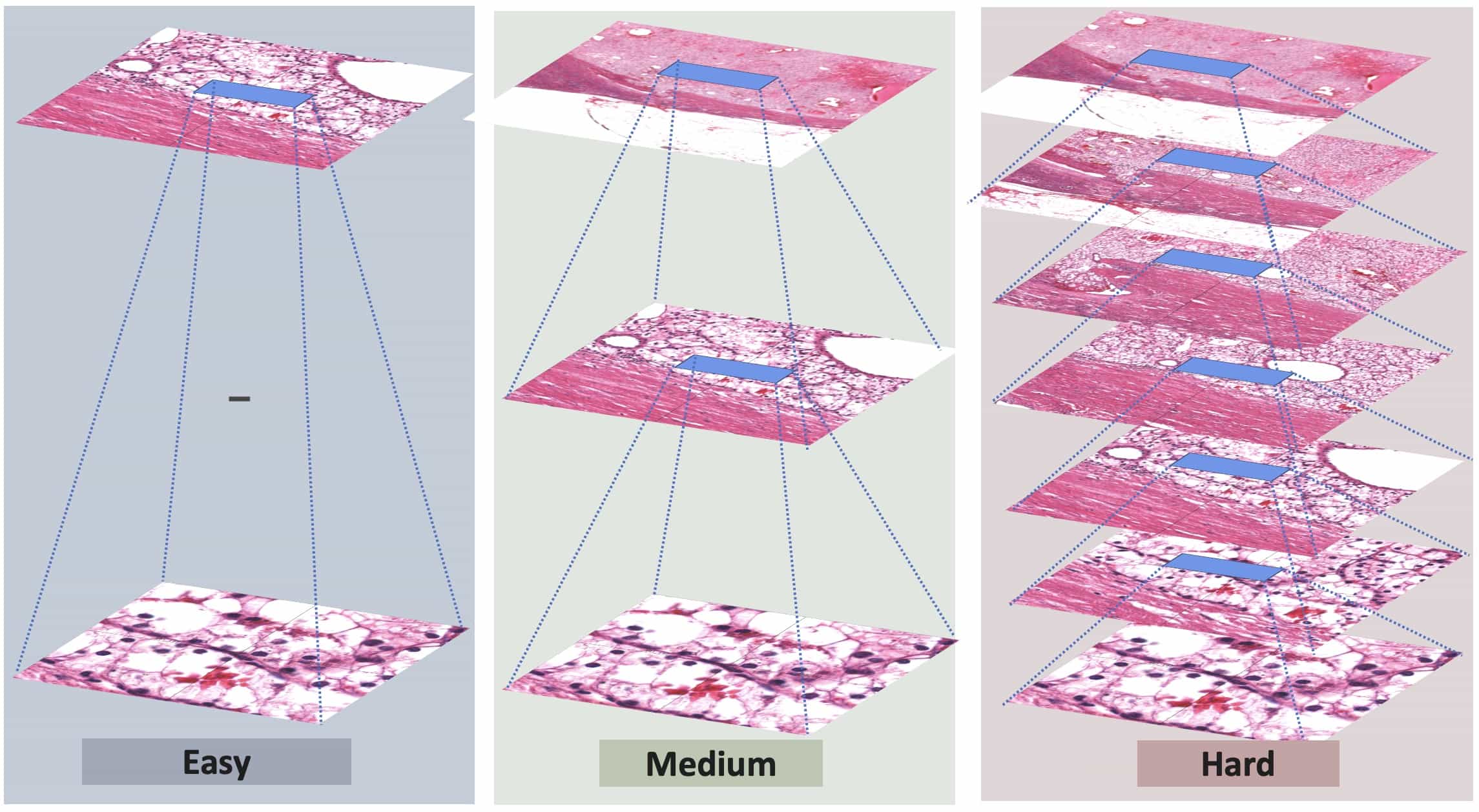HistoGym: A Reinforcement Learning Environment for Histopathological Image Analysis

Introduction
This paper addresses the question: Is the diagnostic process of doctors better modeled as a decision-making task rather than a classification task? We explore whether providing a reinforcement learning (RL) environment to simulate this diagnostic process is a worthwhile endeavor. The motivation for this work is straightforward: to create an RL environment that models the cancer diagnosis process using histopathological data.

Environment Complexity
We further investigate the impact of Environment Complexity on reinforcement learning (RL) performance by systematically analyzing three distinct levels of complexity: Easy, Medium, and Hard scenarios. This analysis provides insights into how varying degrees of environmental challenges influence the learning efficiency and robustness of RL algorithms.

Code Example
xxxxxxxxxximport numpy as npfrom gym_histo import HistoEnv# Initialize Argumentsimg_path =’/path/to/wsi.tif’ xml_path = ’/path/to/annotaion.xml’ tile_size = 128result_path = ’./results’env = HistoEnv(img_path , xml_path , tile_size , result_path) obs = env.reset()done = False while not done:action = env.action_space.sample()obs, reward, done, info = env.step(action)print(’action=’, action, ’info=’, info, ’reward=’, reward, ’done=’, done) env.render(mode="human")if done:print("Episode Terminated", "reward=", reward) breakCitation
If you use this code for your research, please cite our paper.
xxxxxxxxxx@misc{histogym2024, title={HistoGym: A Reinforcement Learning Environment for Histopathological Image Analysis}, author={Zhi-Bo Liu and Xiaobo Pang and Jizhao Wang and Shuai Liu and Chen Li}, year={2024}, eprint={2408.08847}, archivePrefix={arXiv},}